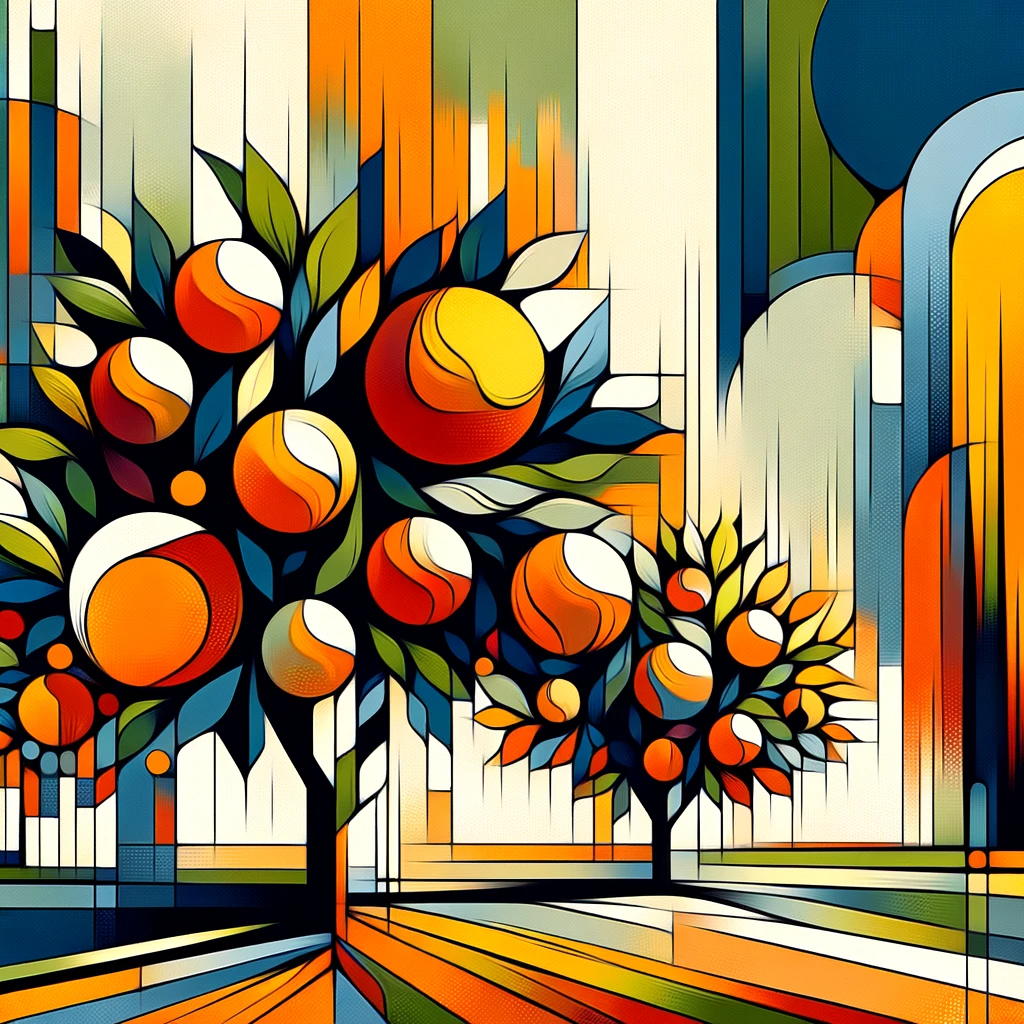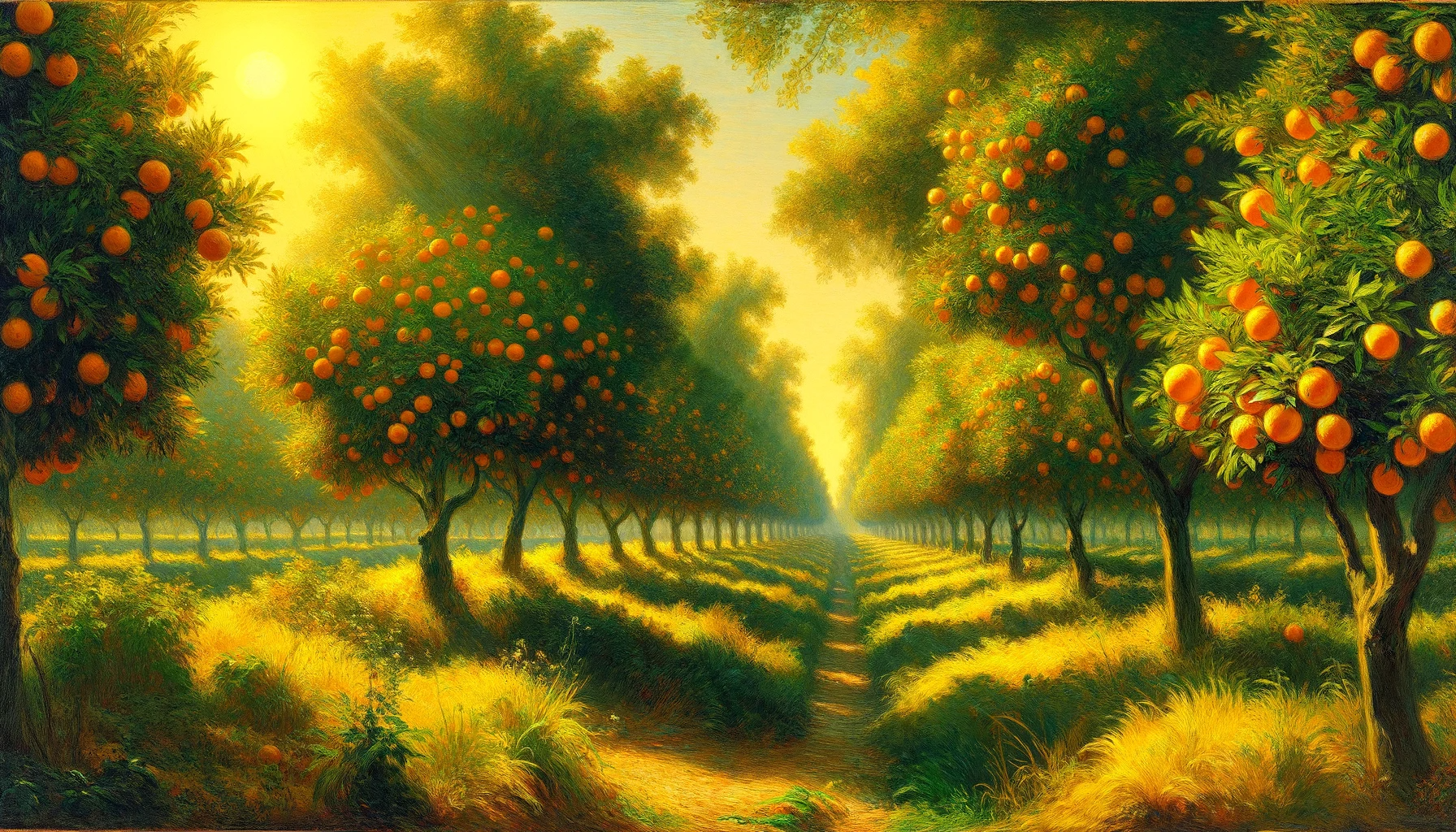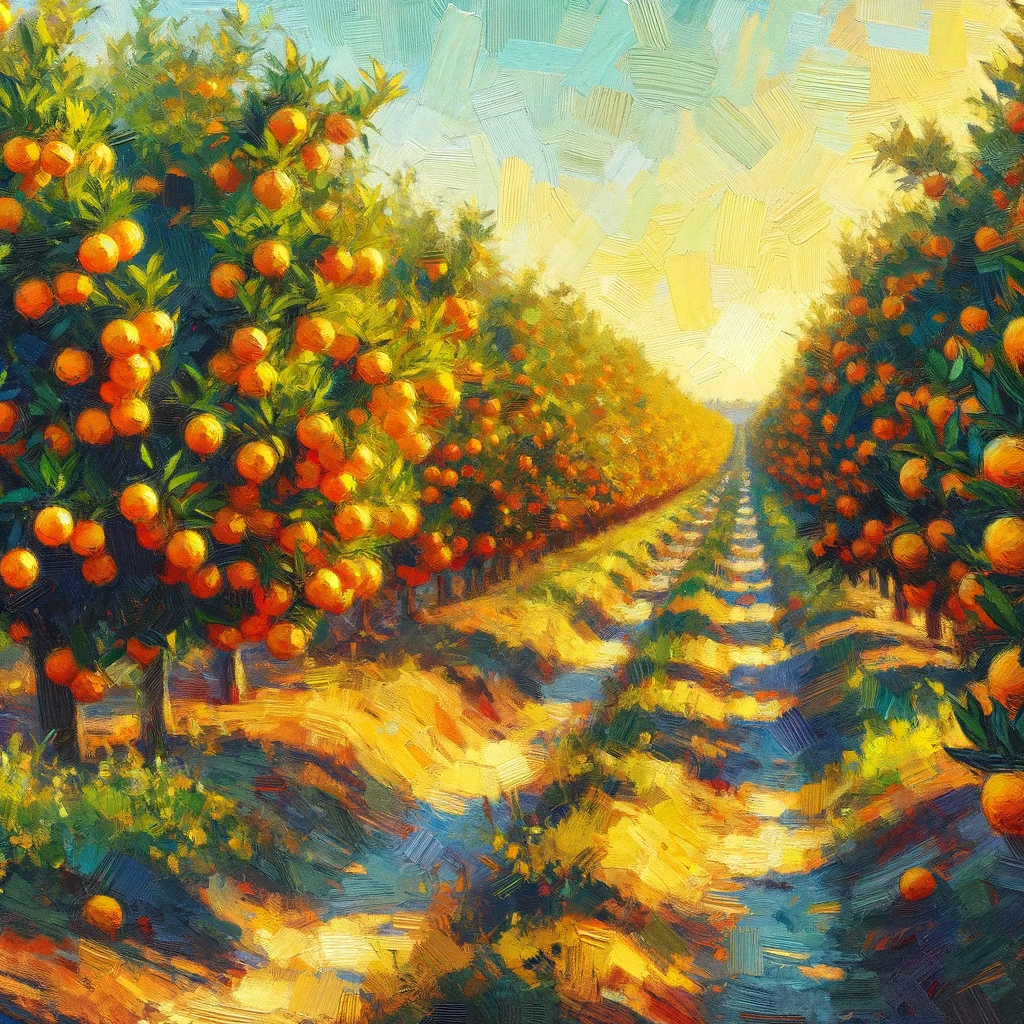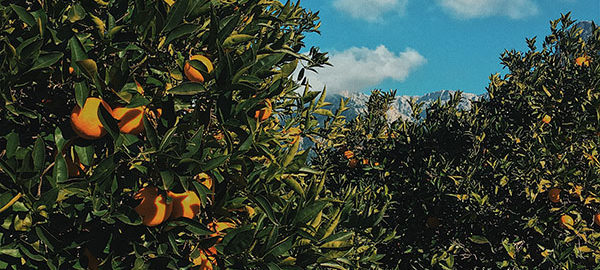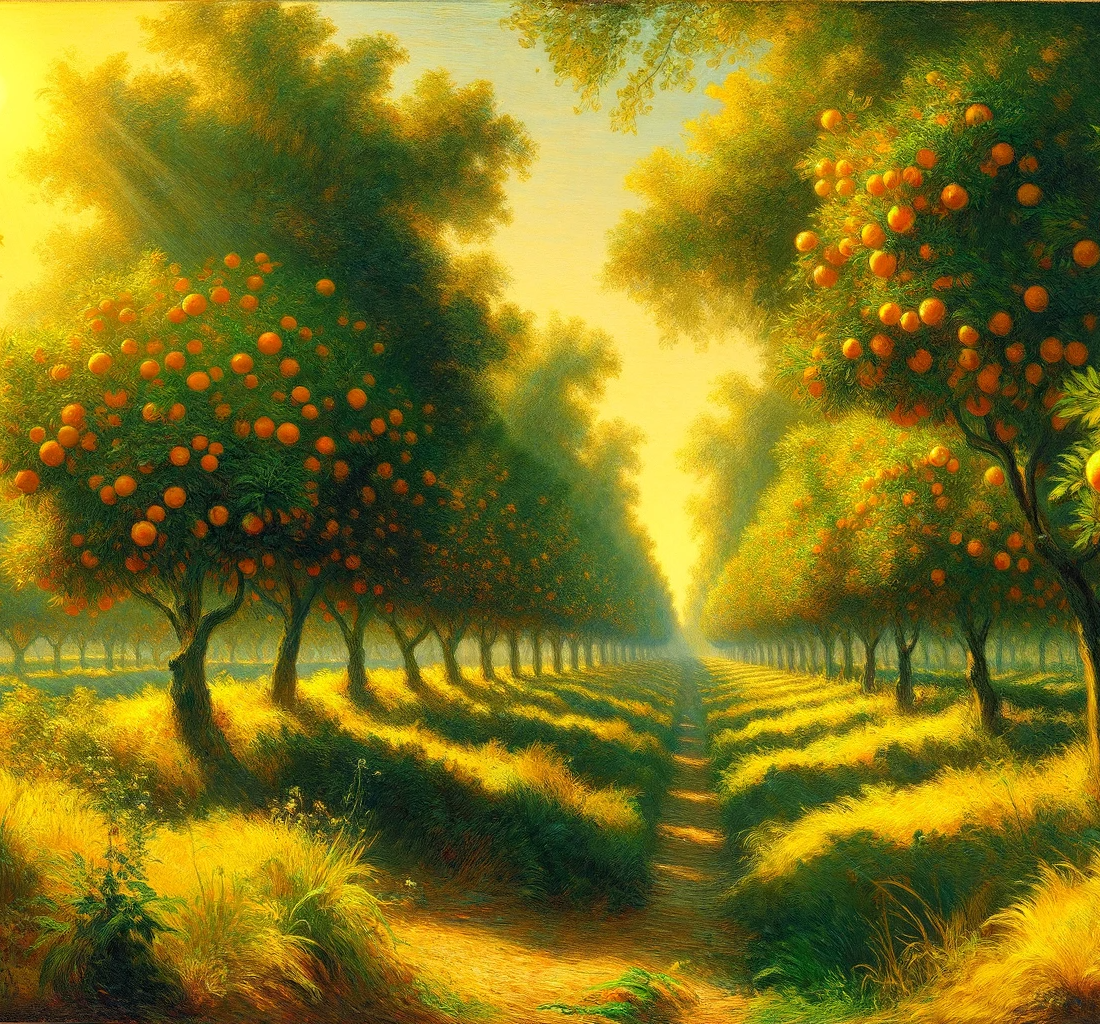
In the golden era of the Dutch Golden Age, amidst the flourishing of arts and culture, Rembrandt van Rijn, a master of chiaroscuro and human emotion, created a masterpiece unlike his usual subjects. This painting, crafted in the mid-17th century, is an ethereal depiction of a hazy day in an orange orchard. The canvas is alive with the warm glow of the sun filtering through the mist, casting a dreamlike aura over the grove. Each orange appears as a drop of sun, captured in the embrace of lush, dark leaves.
Rembrandt, known for his profound portraits and biblical scenes, found unusual inspiration in the serene beauty of nature. It is said that a visit to a flourishing orchard during a summer trip to the countryside ignited this inspiration. The painting stands apart in his oeuvre, a testament to his versatility and deep appreciation for the natural world. The way he captured the light, a soft, golden hue that seems to dance on the leaves and fruit, is reminiscent of his skill in portraying divine light in his more religious works.
This artwork, while a departure from his typical themes, is imbued with the same depth of emotion and mastery of light and shadow that defines Rembrandt’s legacy. It’s a rare jewel, showcasing a moment of tranquility and the simple, yet profound beauty of a day in an orange orchard.
In the latter part of the 19th century, Claude Monet, the father of Impressionism, turned his insightful gaze and deft brushstrokes towards a subject that captured the essence of his style – a hazy day in an orange orchard. This painting, created during a period when Monet was deeply exploring the interplay of light and nature, is a symphony of color and light. The scene is bathed in a delicate, diffused sunlight that seems to dissolve the boundaries between the sky and the earth, a hallmark of Monet’s impressionistic touch.
The inspiration for this piece came during Monet’s travels in the Mediterranean, where the vibrant hues and luminous light of the landscape captivated his artistic senses. Unlike the structured gardens of Giverny, this orchard was wild and untamed, its oranges glowing like fiery gems amidst a sea of verdant foliage. Monet’s brushwork, with its quick, dappled strokes, captures the fleeting quality of the light and the gentle movement of the leaves in the breeze.
In this painting, Monet transcends mere representation; he invites the viewer to feel the warmth of the sun and the tranquility of the orchard. The oranges are not just fruit but bursts of light, echoing the sun above. This artwork is a testament to Monet’s lifelong quest to capture the ephemeral moments of nature, a vivid dance of light and color that immerses the viewer in the simple, yet profound beauty of a hazy day in an orange orchard.
In the early 20th century, Pablo Picasso, a revolutionary in the realm of modern art, ventured into a realm uncharacteristic of his renowned cubist and abstract styles. He created a mesmerizing depiction of a hazy day in an orange orchard. This piece, crafted during a period of exploration beyond his usual avant-garde boundaries, is a vivid tapestry of form and color, showcasing a different facet of Picasso’s artistic genius.
The inspiration for this work is said to have come during a sojourn in the south of France, where the rustic charm and vivid colors of the Mediterranean landscape captivated Picasso’s ever-curious eye. Unlike his geometric dissections of reality, this painting offers a more organic, yet still stylistically unique, interpretation of nature. The orchard is rendered in a series of fragmented planes, with the oranges depicted as luminous orbs, almost jewel-like against the angular, leafy backdrop.
Picasso’s approach to this subject is a fascinating blend of his signature cubist technique with a hint of surrealism, bending reality to convey the ethereal quality of the orchard bathed in hazy sunlight. The painting is alive with dynamic shapes and a vibrant palette, evoking the warmth and vitality of the scene. It stands as a testament to Picasso’s versatility and his ability to capture the essence of a moment in a manner that is entirely his own, transforming a simple orchard into a complex, captivating world of color and form.